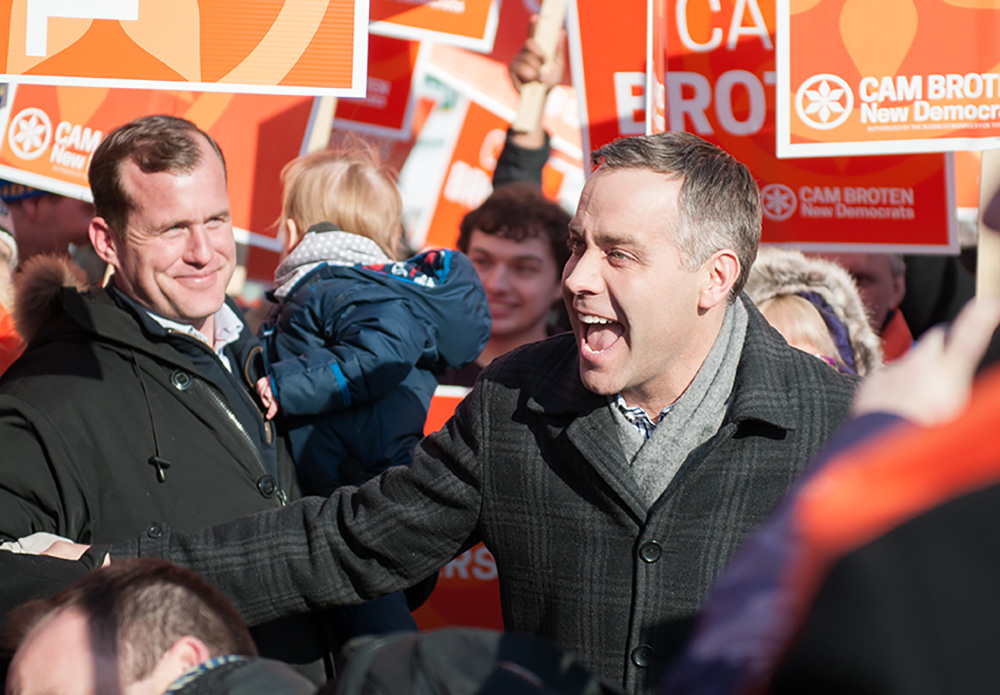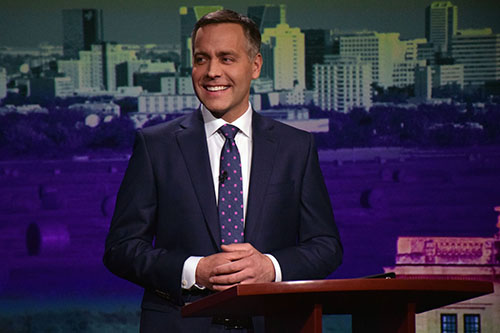Backgrounder by Tennessa Wild
Agriculture employs over 50,000 people in Saskathewan and is a major driver of provincial exports. Come election time, it matters. As a cornerstone of Saskatchewan heritage, it is the government’s responsibility to ensure the industry stays strong and viable for future generations.
The topic is so important that representatives of five Saskatchewan political parties met on March 22 at Saskatoon’s Persephone Theatre for the WhyAgMatters 2016 Provincial Election Debate. An open discussion is what Agriculture Producers Association of Saskatchewan wanted to achieve with the event, which they co-hosted with the Western Producer.
Carbon tax implementation left Liberal leader Darrin Lamoreux dodging the provincial plan and rural internet accessibility had Lyle Stewart, Saskatchewan Party minister of agriculture, admitting his party needs to do better.
Over 80 onlookers filled the theatre and twitter was trending #WhyAgMatters across the province. A carbon tax has sparked interest since Trudeau and the Liberal Party have looked to address Canada’s role in global emissions. The federal government is looking at a $15 per tonne imposed tax, which is well below B.C.’s $30 per tonne tax. The money will be put towards national green initiatives.
B.C. implemented carbon tax on agricultural sectors on July 1, 2008. As of 2012 they have granted some agriculture sectors exemption from the tax and still face strong opposition. A 2014 report funded by the B.C. Ministry of Environment did conclude that the tax has “a small effect on the agricultural sector.”
The Agriculture Producers Association of Saskatchewan strongly opposes the carbon tax because it believes higher prices will be transferred to their customers. Moderator Jeanne Martinson asked the panel subjectively, “What will your party do to ensure agriculture is exempt from carbon tax?”
The Sask Party’s Stewart was unequivocal. “We need your help to make sure that the federal government doesn't impose it upon us,” he declared. The Sask Party is lobbying against the federal proposal and is encouraging the Association to do the same.
Lamoreux said there is no clear definition of what the carbon tax would look like and inadvertently took no stance. He explained there will be more research federally and provincially before it becomes legislation.
Rick Swenson, Progressive Conservative leader, was similarly non-committal. “I think there is probably a market there… but there’s no discovery mechanism for what carbon is actually worth.” However, the other three parties are strongly opposed.
Water management was another topic that saw sharp contrast between parties. The flooding throughout Saskatchewan has brought a loss to agriculture production that cannot be ignored. An August 2015 Saskatchewan Water Security Agency Report found 27,000 acres of private land have gone under water and 58,000 acres of Crown land in the Quill Lakes area alone since 2005.
The Agricultural Producers would like to see more organized drainage systems and flood prevention tactics created by government. The group envisions working with landowners as a direct part of the initiative. In 2015 the government published an Agriculture Water Management Strategy which has landowners and the SWSA working together on drainage licensing and agreements.
Stewart said he is looking forward to the strategy being implemented by SWSA. “The ministry of environment will put the people in place to do a proper job,” he maintained.
In contrast, the Conservative’s Swenson strongly suggested the SWSA is not a solution. “I don’t think there’s been a policy put in place. John Diefenbaker was the last guy that had a vision about it and he built the dam on the Saskatchewan River 50 years ago, so we need to get on with it and start managing this resource,” he argued. The Progressive Conservative Party would also compensate farmers who lose their land to flooding or drainage, according to Swenson.
Green Party agricultural critic Ryan Lamarche is also skeptical about the SWSA’s ability to solve the problem. “We need to come up with a strategy. We need to sit in meetings with farmers and develop something that will really work,” he said.
“The current law is not being enforced… It pits neighbours against neighbours first, before any Water Security Agency official will step in,” said NDP agriculture critic Cathy Sproule. Sproule added the SWSA is overwhelmed with the 2015 strategy and urged a more immediate solution.
Lamoreux said Saskatchewan should “be able to create something where it’s like a retaining tank; it’s a holding tank. As the water goes up and down and fluctuates it will at least protect the land from over land flooding.”
Each party has its own way of dealing with water management, with the Saskatchewan Party showing more reliance on the SWSA than any other party.
The debate also addressed rural infrastructure and rail transportation needs. The cost to not having accessible telecommunications is a concern for Saskatchewan producers. Whatever their platforms, the next party to lead the province will be confronting all of these issues and more.


















